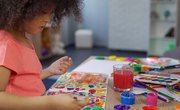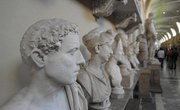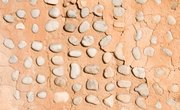Graffiti is a colorful, vibrant and creative form of expression that teachers can use to hook students into various classroom activities. Specifically, a graffiti mural will allow students to become engaged in making the classroom a community space that they can take ownership of. When guided carefully, students can use this fluid form of art to respond to literary quotations and brainstorm about a project or discussion topic. In the beginning of the school year, a graffiti mural can serve as an icebreaker, which will allow students and instructors to learn about one another as they collaborate to create a piece of artwork.
Supplies and Technique
Before beginning the graffiti wall, choose a designated space in the classroom for the mural. Ideally, the space should be well lit and easy to access for students. Begin by discussing the types of media that will be used to create the graffiti mural. If using paint, acrylic and tempera are best as they dry quickly and are low-odor. If creating a collage graffiti mural, point out the types of fabric, paper, plastics and other found materials that would work best for your project. Review technique by providing mini-lessons on sketching, drawing and painting.
Thematic Approaches
Graffiti wall murals should be thematically connected to the class subject or school culture. Seek inspiration by exposing students to graffiti art through walking tours, museums and libraries. Aside from words, students will note that graffiti art often incorporates portraiture. For a literary graffiti wall, have students paint portraits of their favorite authors. Similarly, in a social studies class students could creatively use graffiti to chronicle an important historical event or figure. If students are creating the graffiti wall as an icebreaker to express their identities, have them choose appropriate quotations and images that are meaningful to them.
The Value of Drafting
Once the class has decided on a graffiti wall theme, have students work either independently or in small groups to draft images for the wall. Because the scale of the project is large, students will need to carefully plan out their images. Place large pieces of butcher paper around the classroom so that students can scale the images of the project. Provide students with sidewalk chalk and take the drafting project outside. Take pictures of student's sidewalk art. After students have finished, display all the drafts around the classroom and try to incorporate as many pieces into the final graffiti wall as possible.
Work Together and Create
Because class sizes can be large, it may be impossible to allow all students to work on the final graffiti wall project at once. Break up the class into groups, and allow each group a different day to work on the mural. Within the groups, give specific responsibilities to each student. Perhaps one student will sketch out an image, another will paint, and another will supervise that the image is staying within the parameters of the draft. Once the final product is done, celebrate with a classroom gallery party.
Related Articles
References
Writer Bio
Kelly Chester is an educator and writer who has worked in both public and private schools for almost a decade. Her areas of expertise include literature, writing, history and art for adolescents. In addition to writing reports for NYSAIS, she has also written a biography on artist Frank Covino, which was published in the anthology “Teaching Lives.”











